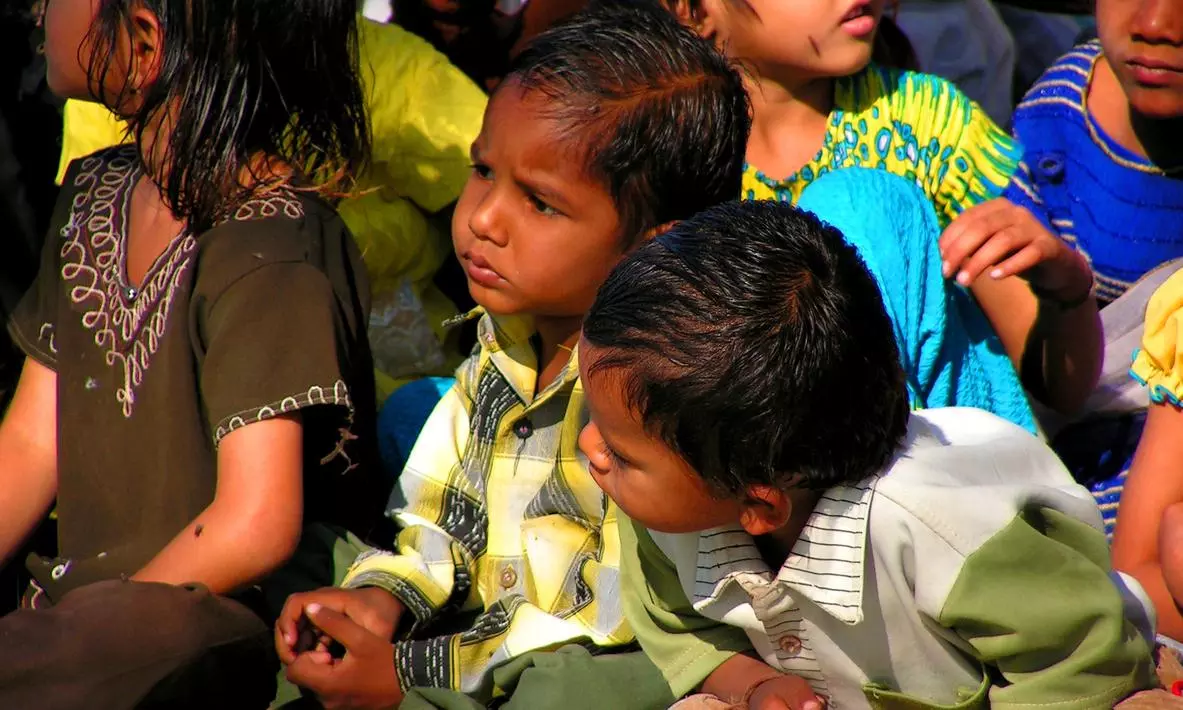
NITI Aayog education index | Gujarat gets middling scores with poor infra, staff crunch
Gujarat's score is 58, against Kerala's 82, Haryana and Himachal's 77; Jharkhand, Rajasthan and Chhattisgarh have scored better than Gujarat

The Sustainable Development Goal (SDG) Index for 2023-24 published by NITI Aayog has revealed that Gujarat's performance in the education sphere is far from satisfactory.
Gujarat's score in the index for education is 58, which is far lower than states like Kerala, with an SDG score of 82, and Haryana and Himachal Pradesh (both at 77). In fact, Gujarat ranks even lower than Jharkhand, Rajasthan and Chhattisgarh.
Low enrollment, high dropout
Per the NITI Aayog report, Gujarat’s enrollment ratio in higher secondary classes (classes 11-12) is 48.2 per cent while Kerala's is 85 per cent and Tamil Nadu's is 81 per cent.
The enrollment ratio in elementary classes (from Classes 1 to 8) is 89 per cent. Andhra Pradesh, a comparable state, has a ratio of 98 per cent in this category.
The dropout ratio in secondary classes (classes 9-10) in Gujarat was higher than the national average, while the dropout ratio in elementary classes was 17.9 per cent. The national dropout ratio was 5.5%.
Notably, the Gujarat government has been running Shala Praveshutsav, a school enrollment programme for more than 15 years, where senior IAS, IPS and even IFS officers visit villages to ensure that enrollment in schools increases annually.
And yet, the dropout rate, particularly in secondary and higher education, has shot up over the years, crossing the national average.
Staff crunch
Academic experts hold that one of the primary reasons for the high dropout rate and low enrollment rate in government schools is a staff crunch.
In February 2024, Gujarat Education Minister Kuberbhai Dindor informed the legislative assembly that 1,606 government-run primary schools were operating with just one teacher for all students from classes 1 to 8. The number has gone up as compared to 2022, when there were 700 single-teacher schools.
“A widening student-teacher ratio in government schools and the increasing privatisation of education have made quality education a luxury for middle and lower middle class of Gujarat. Lack of adequate teachers in primary and secondary classes has been an issue in the state for years now. The state government has not been able to tackle the issue yet and instead resorted to merger of schools post-COVID, causing more dropout among secondary students in the last two years,” Manishi Jani, an education rights activist and a political analyst, told The Federal.
Heavy burden
“From 2020 to 2023, I had to teach algebra, social science, biology, chemistry and Gujarati to the students of classes 9 and 10 in my school," a teacher of Rakhiyal Municipal School in Ahmedabad told The Federal.
"I was the only teacher and also the principal of the school. After multiple requests and letters to the education department, three temporary teachers were sent to my school ahead of the Gujarat Board Secondary School Certificate (SSC) examinations in January 2023," the teacher added.
“However, the teachers did not last long as they were hired on contractual basis and were being paid on per class basis, taking home Rs 16,000 per month as compared to regular teachers who draw anywhere between Rs 50,000 and Rs 70,000 per month. Once they left the school after the exams in March–April, I was all alone again. Currently, I teach all subjects of classes 8, 9 and 10, and have administrative work as a principal as well,” he added.
Single-teacher schools
As per the data provided by the education department, there were 32,674 vacant posts of teaching staff across Gujarat as of December 2023. Out of these, 3,522 vacancies were for principal of secondary schools. About 40,000 schools across the state were running without adequate teaching staff, of which around 15% were functioning with just one teacher for the entire school.
“Out of 44,000 government schools in Gujarat, 14,600 are functioning without proper classrooms, affecting the enrollment and increasing the dropout ratio among students. A total of 2,574 schools across Gujarat are in a dilapidated condition. About 7,599 schools are operating from a single room with a thatched roof,” Prof Hemant Shah, an academician told The Federal.
“The state government has been claiming that the Shala Praveshutsav events have been resulting into 90% enrollments. However, there is stark difference between what the Gujarat government claims and what the central agencies have reported. The state government should accept the lapses and work on improving the education sector as the future of students is at stake,” added Shah.

